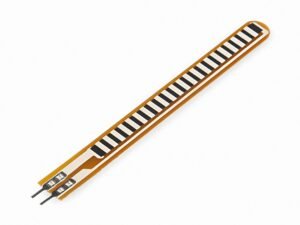The SW-420 vibration sensor is a small module designed to detect vibrations or shocks on surfaces.
It’s a versatile device that can be used for a variety of applications, such as sensing if someone knocks on a door, identifying problems in machines, detecting car accidents, or as part of an alarm system. This sensor is compatible with low-voltage systems since it operates on a power supply ranging from 3.3 V to 5 V.
Working Principle of Vibration Sensor
At the heart of the SW-420 vibration sensor module is a SW-420 vibration switch coupled with an LM393 voltage comparator. The vibration switch contains a spring-loaded rod within a tube.
When a vibration or shock occurs, the movement causes the spring to make contact with the rod, thus closing an electrical circuit. The sensor detects these movements and translates them into electrical signals.
The LM393 comparator is a critical component in this setup. It takes the electrical signals from the vibration switch and compares them to a preset threshold voltage, which you can adjust using the onboard potentiometer. When the signal’s amplitude surpasses the threshold, the comparator’s output switches to high (1), indicating a vibration has been detected. If the signal is below the threshold, the output remains low (0), indicating no significant vibration.
Features & Specifications of SW-420 Vibration Sensor
- Voltage: 3.3-5V DC
- Current: 15mA
- Sensor: SW-420 normally closed
- Indicators: Power and signal LEDs
- Design: LM393 comparator
- Compatibility: Easy to use with microcontrollers
- Installation: Bolt holes for mounting
- Size & Cost: Compact, affordable, widely available






Reviews
There are no reviews yet.